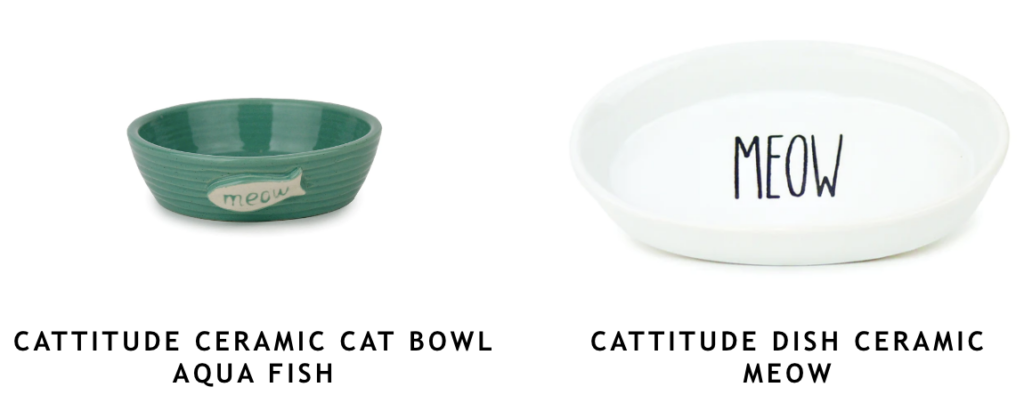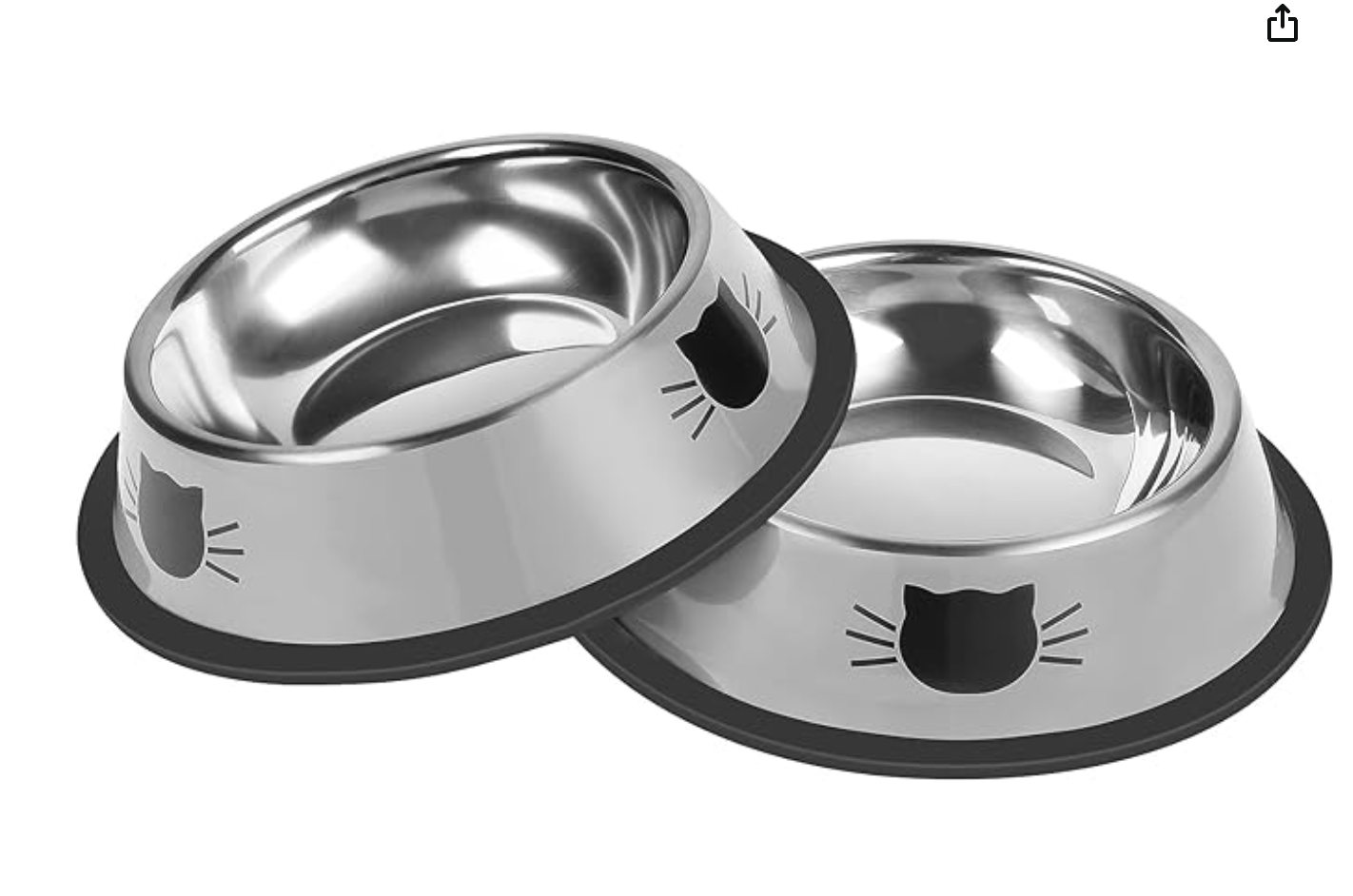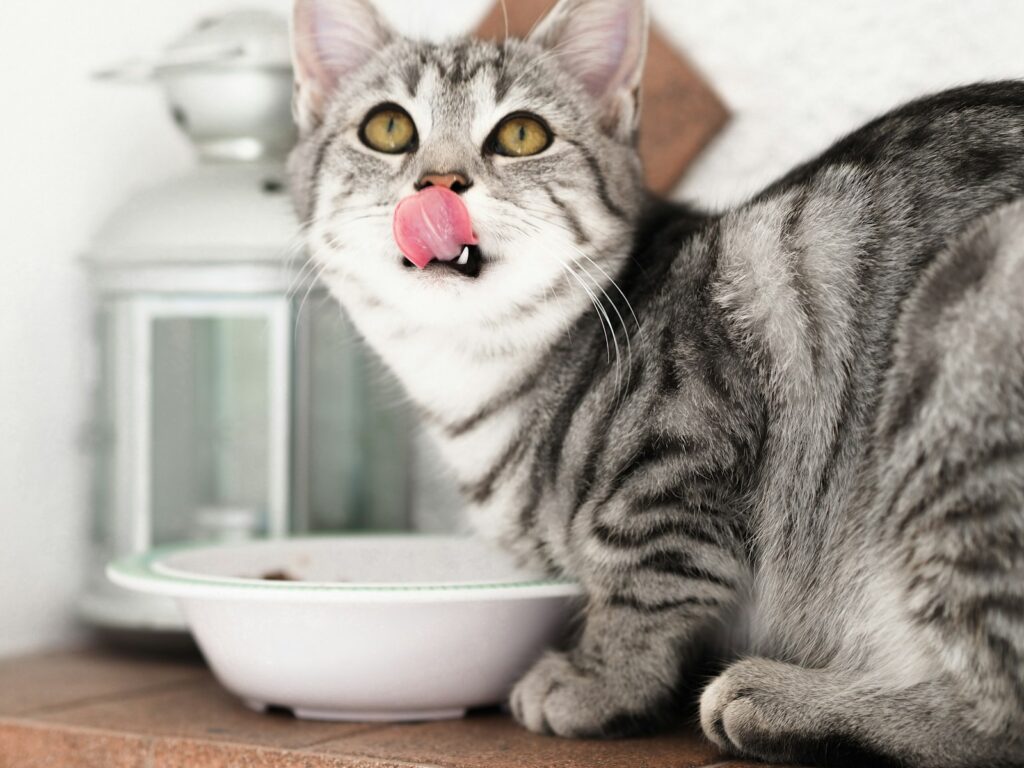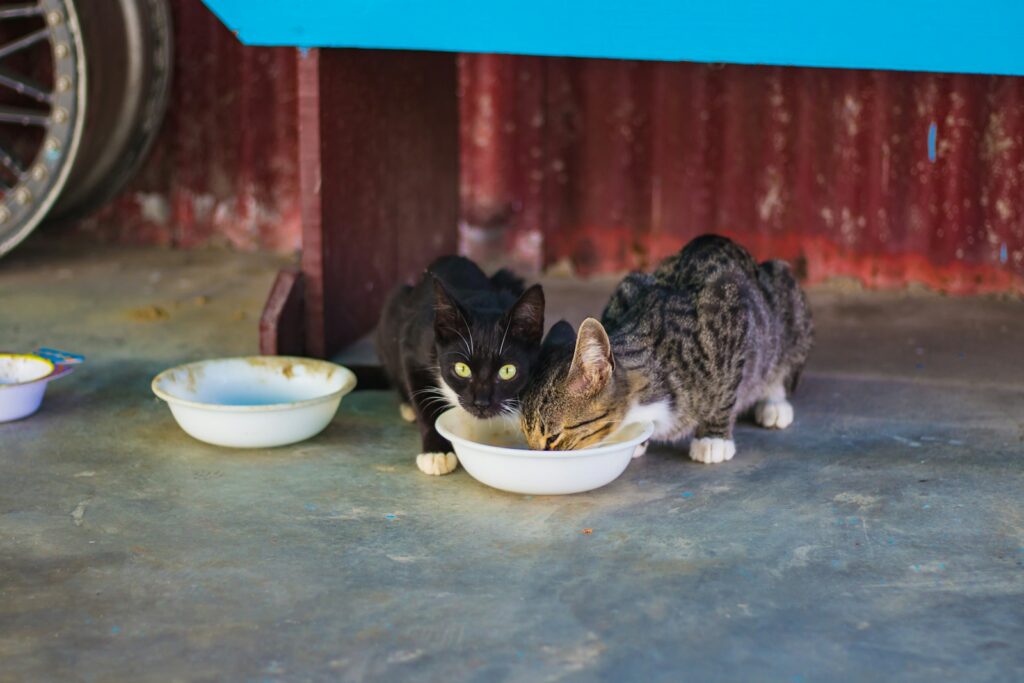Do you ever wonder if your cat’s food and water bowls are the best choice for their health? With many options, from materials to shapes to elevated stands, picking the perfect cat bowls can get confusing.
Introduction
In this blog post, you’ll discover the pros and cons of various cat bowl options to make an informed decision. I’ll cover everything from cat bowl materials to shape and size recommendations to tips on meeting the needs of multiple cats.
You’ll even learn some surprises, like whether cats actually prefer bowls or plates!
By the end, you’ll understand how to select cat bowls that support your cat’s natural instincts and behaviors.
What Type of Cat Bowl is Best for Cats?
When selecting the best cat bowls for your feline friend, you have options ranging from stainless steel to ceramic to plastic.
The ideal material depends on factors like ease of cleaning, durability, and safety.
1) Ceramic Cat Bowls
Ceramic cat bowls are often among the most popular options. They come in fun colors and designs, are generally durable, and some higher-end bowls have antimicrobial properties.
Be aware that cheaper ceramic bowls may contain lead and other toxic metals in the glaze.

Source: RSPCA
2) Stainless Steel Cat Bowls
Stainless steel bowls also rate highly for ease of cleaning, durability, and resistance to bacteria buildup.
However, they conduct both heat and cold, which some cats may find unpleasant.
Look for bowls designed specifically for pets.

Source: Amazon
3) Plastic Cat Bowls
Avoid plastic bowls. Although affordable and come in many sizes, shapes, and styles, they tend to scar and retain odors over time.
Plastic also has more safety risks compared to ceramic or stainless steel.
Ceramic and stainless steel cat bowls are the best and safest options. Avoid plastic bowls containing BPA or phthalates.
Should Cats Have Elevated Cat Bowls?
Yes, cats can have elevated cat bowls as it bring many benefits that standard bowls on the floor lack. By raising food and water dishes off the ground, elevated bowls can:
- Prevent neck and joint strains. Cats don’t have to bend as far to reach their bowl contents, reducing muscle effort and fatigue.
- Support digestion. Elevated dishes align more closely with a cat’s natural upright eating posture, allowing food and water to move through the digestive tract more easily via gravity.
- Reduce vomiting. Some cats gorge on their food too rapidly. Elevated bowls slow the pace of eating and drinking, allowing proper food digestion.
- Minimize ear, face, and neck mess. Floor-level bowls often result in cats dragging food and water across their features as they eat. Elevated stands help curb this issue.
- Keep bowls cleaner. Ground debris tracking into floor-level bowls means more frequent washing. Elevated stands prevent dirt, dust, and bits of cat litter from contaminating dishes as easily.
According to veterinarians.org, the ideal elevated bowl stand raises dishes between 4-6 inches off the ground.

Source: Pets at Home
This meets the average cat’s chest and head height for comfortable dining. Just be sure the stand you choose is sturdy and steady to prevent tipping accidents.
Do Cats Prefer Bowls or Plates?

As natural hunters, cats use their whiskers to help guide them while eating. This prompts the question: Do they prefer bowls or flat plates?
There are good reasons for both choices.
Plates are more comfortable.
Wider, shallower dishes like plates allow cats to eat comfortably without bending their whiskers. Plates can feel more natural and less constricting for cats.
Just be aware that plates will accumulate debris like cat food crumbs faster, requiring more frequent cleaning.
Cat bowls are less messier.
Conversely, traditional deeper bowls contain mess better and may feel more secure for some cats. Adding water to kibble can also turn bowl contents into a “broth” that cats eagerly lap up.
In doubt? Provide both.
When in doubt, offer your cat both bowls and plates to see which they prefer. You may find your feline likes one vessel for wet food and the other for kibble or water.
Giving them options also provides needed sensory stimulation. Providing plates and bowls together lets your cat choose the style they like best.
Should Two Cats Have Separate Bowls?

Yes, always give each furry family member his or her dedicated food and water dishes when possible.
It’s ideal for each feline in multi-cat households to have food and water bowls. This helps prevent issues like resource guarding over preferred dishes or faster eaters gorging on communal food.
Separate bowls also reduce the chances of cross-contamination and the spread of illnesses among cats.
Pick different colors and shapes for each cat.
When choosing dishes for a multi-cat home, select different colors, styles, or materials for each cat. This visual distinction helps reinforce that each cat has his or her own bowl. Such cues can minimize guarding behaviors and mealtime anxiety.
Place the cat bowls in different places.
Be sure to place each cat’s bowls in different kitchen or dining areas. Ample space between bowls prevents crowding and allows cats that need slower, solo eating to do so comfortably. Checking that bowls contain equal quantities of food also keeps jealous felines calm.
Different cat bowls contribute to better behavior, space sharing, and stress reduction in multi-cat households.
Ceramic & Plastic Cat Bowls
As discussed earlier, ceramic bowls rank among the top choices for feline dining ware. They also provide a smooth, non-porous surface that resists bacteria buildup and comes clean easily.
Be sure any ceramic bowl you select is lead-free and non-toxic. Lower-priced ceramic vessels may leach dangerous chemicals and heavy metals into food and water.
Investing a few extra dollars in quality materials protects your cat’s health.
Along with ceramic offerings, plastic cat bowls remain frequent in pet supply aisles and catalogs. Their low cost no doubt plays a role here. However, safer choices exist for your cat than plastic food containers.
Why should cat owners avoid plastic bowls?
Plastic tends to scar easily from feline teeth and retains odors even after washing. Lower-quality plastic dishes may leach dangerous BPAs, phthalates, and other chemicals into your cat’s food.
To eliminate this health risk, stick to ceramic, glass, or stainless steel cat bowls instead of plastic ones.
Plastic also becomes brittle when exposed to heat sources or direct sunlight. So, while plastic bowls are affordable, they aren’t as safe as alternatives like ceramic.
Final Thoughts
Provide different cat bowls and plates for your cats to test out. See if they prefer ceramic over stainless steel or raised bowls over floor-level versions.
Matching the right dish to your feline friend depends more on your cat behavior than anything.
By now, you should have a much better grasp of selecting optimal food and water bowls for cats. Please share any other questions you have on picking the perfect cat dish in the comments below!
Let me know what bowls worked best for your furry companion as well.
Frequently Asked Questions
What is the best kind of water bowl for cats?
The best kind of water bowl for cats is typically made of stainless steel or ceramic material, as they are durable, easy to clean, and don’t retain odors like a plastic bowl.
Do cats prefer tap or filtered water?
Cats may prefer filtered water due to its cleaner taste and lack of chlorine odor, but preferences can vary from cat to cat.
Do cats prefer deep or shallow bowls?
Cats generally prefer shallow bowls for drinking, as it allows them to comfortably lap up water without their whiskers touching the sides of the bowl, which some cats find uncomfortable.

Leave a Reply